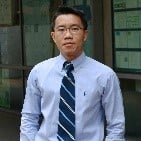Spectroscopy of (Molecular) Plasmonics Systems with TDDFT Methods
A special issue of Molecules (ISSN 1420-3049). This special issue belongs to the section "Molecular Structure".
Deadline for manuscript submissions: closed (31 July 2023) | Viewed by 1179
Special Issue Editors
2. Center for Biomolecular Nanotechnologies, Italian Institute of Technology (IIT), Via Barsanti 14, 73010 Arnesano (Lecce), Italy
Interests: density functional theory; kinetic energy functionals; computational plasmonics; nanocrystals; hybrid interfaces
Interests: time-dependent density functional theory; electronic-excited states nanomaterials; new hardware development; quantum control
Special Issues, Collections and Topics in MDPI journals
Special Issue Information
Dear Colleagues,
Time-dependent density functional theory (TDDFT) is an accurate and efficient approach for the ab initio computation of the optical properties of finite systems, including plasmonic systems such as metallic clusters. Many different TDDFT-based methods and tools have been developed and implemented in the last two decades, ranging from tight-binding approximations to massively parallelized real-time codes.
In this Special Issue we will focus on the application of TDDFT spectroscopy to plasmonics and molecular plasmonics systems (i.e., metallic nanosystems coupled to organic molecules), which are relevant for biology, nanoimaging, optoelectronics and photovoltaics.
This Special Issue highlights contributions on TDDFT applications to linear and non-linear optical response, electron/energy transfer, strong-coupling regime, plasmon-exciton couplings, exchange-correlation effects, novel plasmonic materials, role of the environment and related topics, as well as those describing TDDFT method development, including orbital-free and tight-binding approaches and tools for the investigation of plasmonics properties.
Dr. Fabio Della Sala
Prof. Dr. Bryan M. Wong
Guest Editors
Manuscript Submission Information
Manuscripts should be submitted online at www.mdpi.com by registering and logging in to this website. Once you are registered, click here to go to the submission form. Manuscripts can be submitted until the deadline. All submissions that pass pre-check are peer-reviewed. Accepted papers will be published continuously in the journal (as soon as accepted) and will be listed together on the special issue website. Research articles, review articles as well as short communications are invited. For planned papers, a title and short abstract (about 100 words) can be sent to the Editorial Office for announcement on this website.
Submitted manuscripts should not have been published previously, nor be under consideration for publication elsewhere (except conference proceedings papers). All manuscripts are thoroughly refereed through a single-blind peer-review process. A guide for authors and other relevant information for submission of manuscripts is available on the Instructions for Authors page. Molecules is an international peer-reviewed open access semimonthly journal published by MDPI.
Please visit the Instructions for Authors page before submitting a manuscript. The Article Processing Charge (APC) for publication in this open access journal is 2700 CHF (Swiss Francs). Submitted papers should be well formatted and use good English. Authors may use MDPI's English editing service prior to publication or during author revisions.
Keywords
- time-dependent density functional theory
- molecular plasmonics
- computational spectroscopy
- orbital-free density functional theory
- strong-coupling regime
- metallic clusters
- tight-binding methods
- ab initio plasmonics







